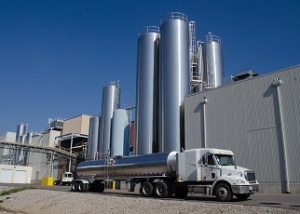Dairy in the World
What Do Recent Falling Feed Prices Mean for Dairy Producers?

Phil Plourd, head of market intelligence for ever.ag, says to expect volatility and plan accordingly.
“I think we are seeing markets react to better weather conditions/forecasts and a less certain - and possibly worse - macro environment,” Plourd says. “That has been a negative for near-term grain prices, but it's hurt dairy values as well. On paper, margins still look decent. But we are a long way from ‘done’ or ‘certain’ on any front.”
Yesterday’s CME prices fell across the blocks with butter at $2.94, down 7 cents, blocks at $2.0850, down 8.75 cents and nonfat dry milk at $1.7475, down 5.50 cents.
Is Now the Time to Contract Feed?
Trent Dado’s phone rang nonstop yesterday with the consistent question, “Is now the time to buy?” The Independent Dairy Nutritionist and Management Consultant with GPS Dairy Consulting says the short answer is, “Probably, yes.”
“Many dairies have taken the opportunity to ensure some milk prices through insurance programs and futures. And many have been waiting for a reprieve in the market like this to make a move and lock in a better overall margins,” Dado says. “These are the best prices we have seen since last fall and well off the recent highs. Thus, if nothing else, a good opportunity to start covering a percentage of the feed needs for the next feed year. This drop in prices has also encouraged feed sellers to start offering pricing and contracts further into next year.”
Dado says that as we witnessed yesterday, milk and feed could continue to move down together. He shares that one of the major reasons feed prices decreased is because of continued threats of inflation and a strong U.S. dollar that limits exports and makes more stocks available for domestic use.
“The same story goes for milk, however,” Dado explains. “High prices and a strong dollar and an imminent recession may make dairy a more expensive option and decrease domestic and international demand.”
Dado also notes that some of the really expensive feed ingredients, like fats, cotton and blood meal haven’t seen a price drop yet.
“Some of these may not come back quite yet,” he says. “However, as is always the case, never pull or change rations to purposely lose production when milk prices are at a historical high.”






















